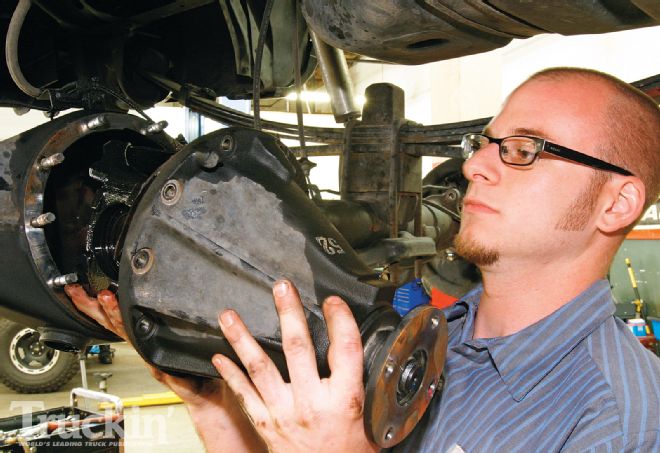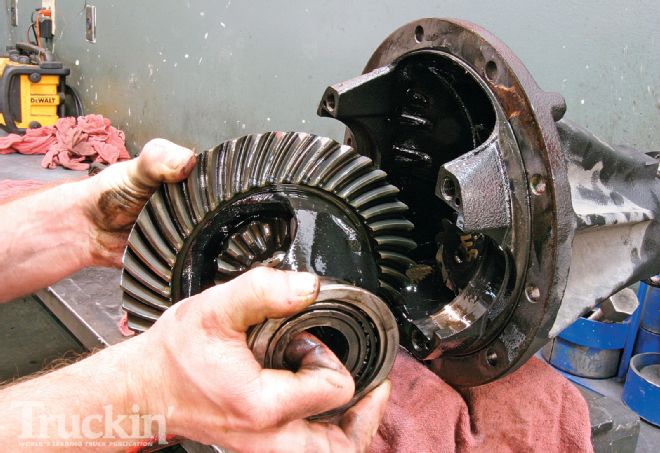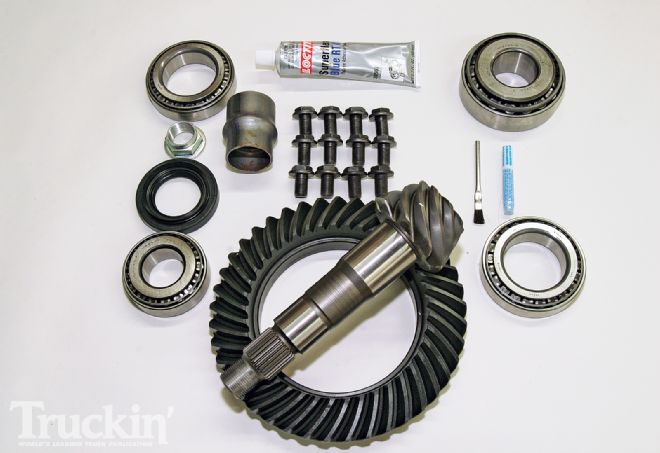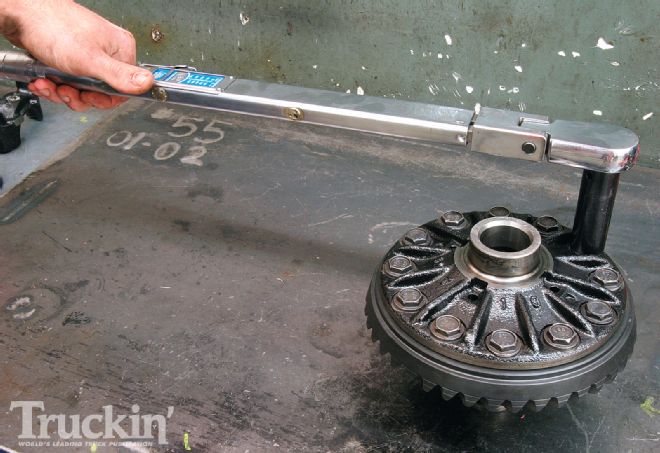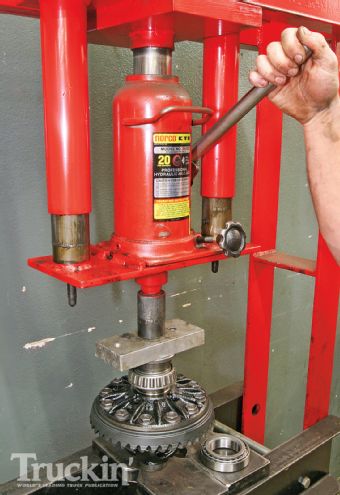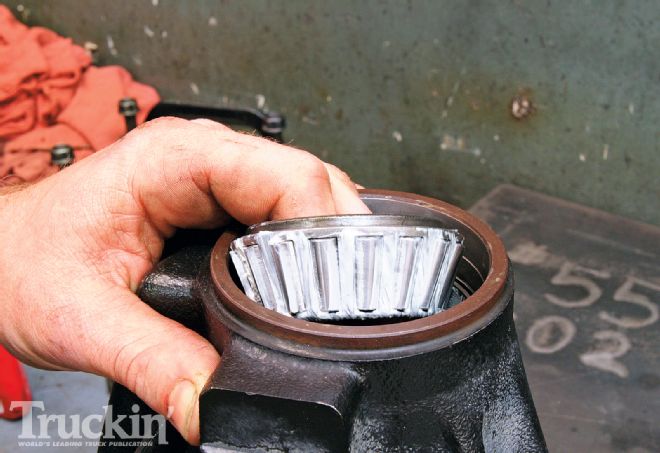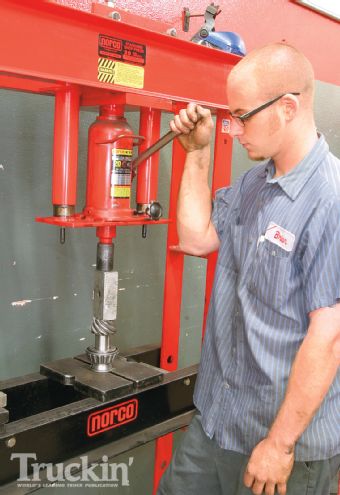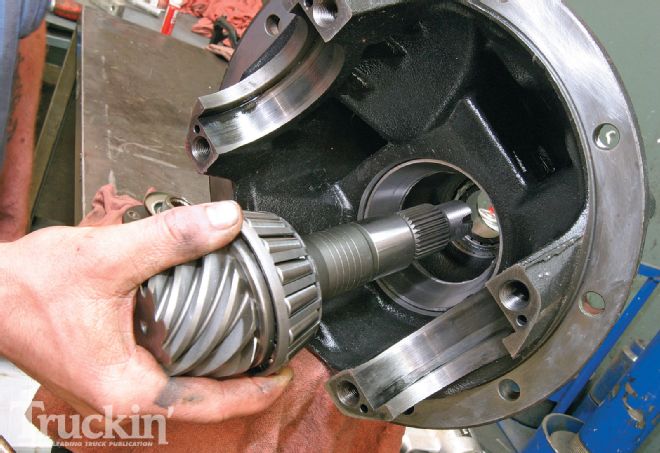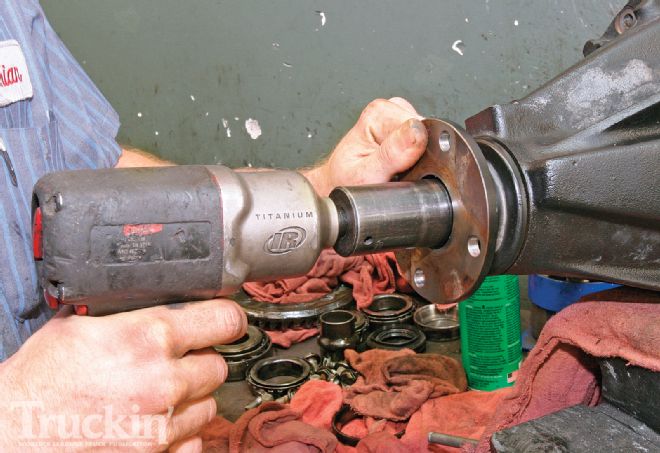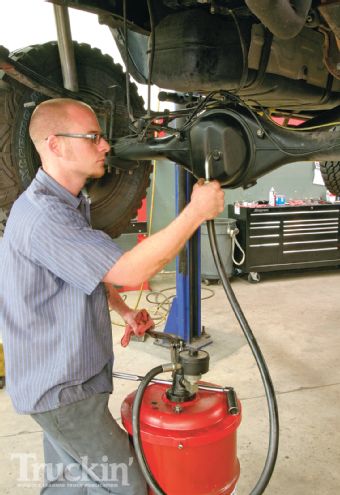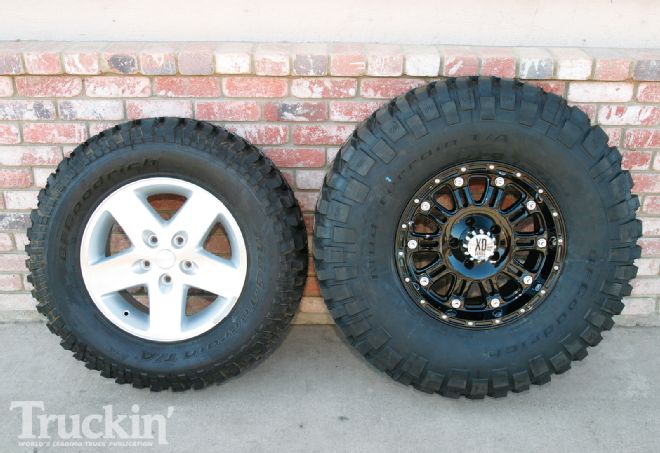After lifting your truck or SUV, you almost always step up to a larger wheel and tire size to complement the new beefy look. When increasing the tire diameter from the factory size, it will have a major effect on your engine's performance. Due to the increased tire diameter, the optimum engine RPM range will be moved effecting your vehicles shift points and drivability.
We rolled over to 4Wheel Parts in Riverside, California, where Brian Gardiner, their driveline and gear specialist, disassembled an '07 Toyota 8-inch rear differential with factory 3.73 gears and replaced them with Genuine 4.56 gears, shims, and bearings. The Tacoma had already received an RBP 6-inch coilover stage II lift and a set of Pro Comp 305/70R18 35-inch tall tires that replaced the factory 245/75R16 30-inch tall tires. Because of the increased tire diameter, the Tacoma's 4.0L V-6 engine RPM was reduced, lugging the engine out of its optimum torque and horsepower range. To increase the Tacoma's engine RPM back to its optimum torque and horsepower range, a taller ring and pinion gear set was installed to the third member of the rear differential to reclaim the torque, power, and drivability. Using the chart in this story, we determined the Tacoma would need new 4.56 gears to reclaim the lost power.
The tire diameter and gear ratio chart will help determine your vehicle's optimum gear ratio to tire size.
To utilize the chart, first find out your vehicle's original factory gear ratio and current tire size. Then follow both gear ratio and tire sizes until they intersect. This intersection would be your approximate RPM at 65 mph. The next step would be to find your new tire diameter, follow that diameter across to the closest RPM to your original and that would be your first choice.
A change that will give more power or better fuel mileage, use the color-coding as a guide.
(Green) Daily driver, best overall performance
(Orange) Most power for street and towing, reduced fuel economy
This chart is based on 65 mph and a gear ratio of 1:1, on a manual transmission in 4th gear.
Note: Driving with an automatic transmission, the engine rpm's will be higher due to slippage in the transmission and the torque converter. In an overdrive transmission, the rpm's in overdrive will be about 15 to 30-percent less than indicated.
From The Driver Seat
After installing the larger Pro Comp Xtreme 305/70R18 tires, the Tacoma became a slug off the line. The engine torque, power, and transmission shift points became less than impressive. After selecting the gear ratio from the chart, Brian at 4Wheel Parts replaced the factory 3.73 ratio with a 4.56 ring and pinion and the Tacoma was brought back to life. The snappy torque and pulling power was instantly reclaimed. Another helpful equation for determining the proper gear ratio when you've swapped tires is: (new tire diameter/old tire diameter) X (old gear ratio) = new gear ratio.
Your Questions Answered
Time Spent Working: 5 hours
Degree of Difficulty: Intermediate
Tools Needed:
Assorted wrenches, sockets, impact gun, torque wrench, press, bearing race installation tools, ball peen hammer, dial indicator, 90-weight gear oil
Parts Used:
Genuine Gear PN35-2056 bearings set
$204.99
Genuine Gear GG/TAC 4.56 PICKR
$205.99
Total Cost: $409.98
(prices from 4Wheel Parts does not include tax or installation)
